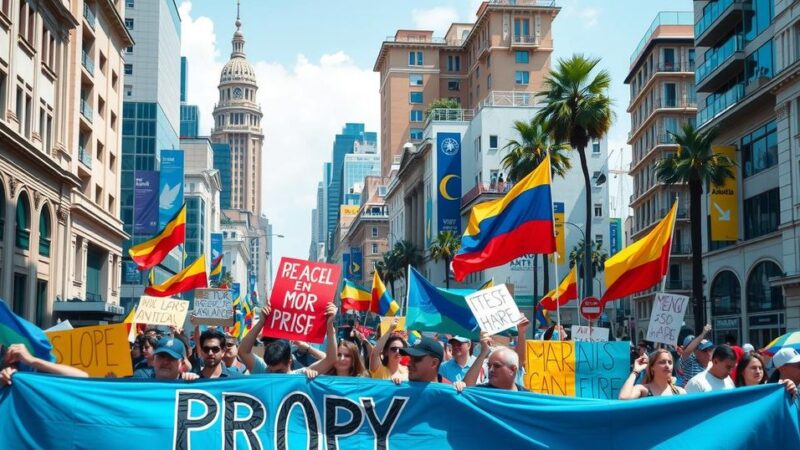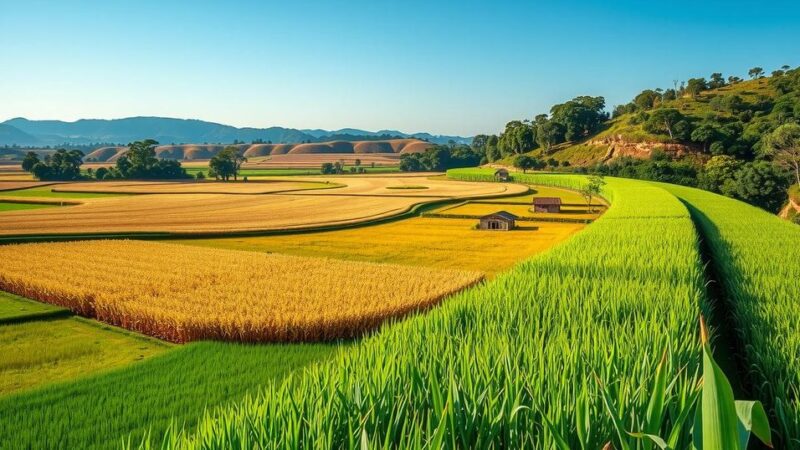Coffee prices rose moderately due to insufficient rainfall in Brazil and the strengthening Brazilian real. Forecasts indicate decreased coffee production in both Brazil and Vietnam, raising supply concerns amid global market fluctuations.
Coffee prices experienced moderate increases attributed to insufficient rainfall in Brazil and the rising value of the Brazilian real. On Wednesday, May arabica coffee closed up 1.89%, while May robusta coffee rose by 1.06%. According to Somar Meteorologia, Brazil’s leading arabica coffee production area, Minas Gerais, received only 30.8 mm of rain, which is significantly lower than the historical average of 71%. Moreover, the Brazilian real reached a 4-1/2 month high against the dollar, discouraging producers from selling exports.
The increase in robusta coffee prices was somewhat offset by an uptick in inventories, which rose to 4,336 lots, marking a one-week high. In contrast, arabica coffee inventories fell to a three-and-a-half week low of 782,648 bags. Concerns regarding supply persists, particularly after Cecafe revealed that Brazil’s green coffee exports had declined by 12% year-over-year in February, with exports totaling three million bags. Additionally, Conab projected Brazil’s coffee crop for 2025/26 would decrease by 4.4% year-over-year to 51.81 million bags and reduced the 2024 estimate to 54.2 million bags from 54.8 million.
However, Marex Solutions recently projected a widening of the global coffee surplus for the 2025/26 season, estimating it to reach 1.2 million bags. Furthermore, robusta coffee faces downward pressure as Vietnam reported a 6.6% year-over-year increase in February coffee exports, posing a challenge for market prices as it remains the world’s leading producer of robusta coffee beans.
Drought conditions have adversely affected coffee crops in South and Central America, particularly in Brazil, which has been enduring its most prolonged dry spell since 1981. This adverse weather has hampered flowering stages and jeopardized the prospects for the 2025/26 arabica coffee crop. In Colombia, the second-largest arabica producer, recovery from last year’s El Nino-induced drought is progressing slowly.
Reduced production in robusta coffee sources, particularly Vietnam, has contributed to price support for this variety. Vietnam’s production for the 2023/24 crop year plummeted by 20% to 1.472 million metric tons. For the upcoming 2024/25 marketing year, the USDA FAS forecasts a slight dip in Vietnam’s robusta production to 27.9 million bags. In addition, a reported 17.1% decline in Vietnamese coffee exports adds to the grim outlook.
Conversely, Brazil’s coffee export figures appear robust, with a 28.8% year-over-year increase, reaching a record 50.5 million bags. Nevertheless, global coffee exports are down, with the ICO reporting a drop of 12.4% year-over-year in December exports. The USDA’s biannual report indicates mixed prospects, projecting a 4.0% global production increase in 2024/25 but a decrease in Brazil’s production estimates.
Recent adjustments by Volcafe forecast a dramatic decline in Brazil’s arabica coffee production for 2025/26 to 34.4 million bags, highlighting the severe impact of ongoing drought. This aligns with projections of a global arabica coffee deficit of 8.5 million bags, more acute than the preceding year’s deficit of 5.5 million bags.
In summary, Brazilian coffee prices are currently supported by reduced rainfall and a strong local currency. Forecasts suggest decreased coffee production for both Brazil and Vietnam, which, combined with ongoing drought challenges, may further elevate prices despite some bearish global supply indicators. The outlook remains mixed, with concerns over long-term impacts on crop yields dominating discussions among market participants.
Original Source: www.nasdaq.com






